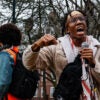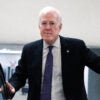Nothing is stranger than the contemporary American university.
Not long ago, Americans used to idolize their universities. Indeed, in science, math, engineering, medicine, and business, many of these meritocratic departments and schools remain among the top-ranked in the world.
Top-notch higher education explains much of the current scientific, technological, and commercial excellence of the United States.
After World War II—won in part due to superior American scientific research, production, and logistics—a college degree became a prerequisite for a successful career. The GI Bill enabled some 8 million returning vets to go to college. Most graduated to good jobs.
The university from the late 1940s to 1960 was a rich resource of continuing education. It introduced the world’s great literature, from Homer to Tolstoy, to the American middle classes.
But today’s universities and colleges bear little if any resemblance to postwar higher education. Even during the tumultuous 1960s, when campuses were plagued by radical protests and periodic violence, there was still institutionalized free speech. An empirical college curriculum mostly survived the chaos of the ’60s.
But it is gone now.
Instead, imagine a place where the certification of educational excellence, the Bachelor of Arts degree, is no guarantee that a graduate can speak, write, or communicate coherently or think inductively.
Imagine a place that requires applicants to submit high school grade-point averages and standardized test results but doesn’t require its own graduates to pass a basic uniform competency test.
Imagine a place where after an initial trial period, a minority of elite employees receive lifetime job guarantees.
Imagine a place supposedly devoted to equity where only 30% of the faculty are privileged enough to be tenure-tracked. The other 70% are second-class, categorized as part-time or “contingent” faculty. And they receive a fraction of the compensation per hour of instruction as their more elite counterparts.
Imagine a place that cherishes student interaction and criticism of the “establishment,” yet the ratio of instructors to administrators is about 1 to 1. The money devoted to nonteaching administrative costs is now about equal to the money devoted to classroom instruction.
Imagine a place where “diversity” is the professed institutional ethos, while studies reveal that liberal faculty outnumber their conservative counterparts by over 10 to 1.
Imagine a liberal place where in 2021 race can still be used as a criterion in selecting and rejecting applicants, choosing prospective dorm roommates, organizing segregated dorms, and restricting access to special places on campus.
Imagine a progressive place that once renounced unconstitutional “loyalty oaths” but now rebrands them as “diversity pledges” and requires reeducation and indoctrination training.
Imagine a place with non-taxable endowments that restricts free speech and expression. Nonprofit universities make it impossible for some speakers to lecture, and often suspend constitutionally protected due process for students facing particular allegations.
Imagine a place loudly devoted to income, capital, and marketplace equity measured against the reality that 800 of the largest colleges and universities hold more than $600 billion in endowments. Yet just 20 elite universities account for half that total. And just four—Harvard, Yale, Stanford, and Princeton—account for almost a quarter of all endowment funds.
Imagine a liberal place that has upped its tuition and total costs far beyond the rate of inflation, with its graduates now collectively owing $1.7 trillion in student loan debt. There is little hope that many of these student debtors will ever pay back their obligations, which average more than $30,000 each.
Imagine a place that has institutionalized human rights but welcomes nearly 400,000 students from human rights-violating China—a great many of whom are the offspring of elite Communist Party members who provide a lucrative source of university income.
Imagine a place where faculty and students now selectively change the names of campus streets, centers, and buildings that honored supposedly illiberal, long-dead donors, graduates, and former heroes.
Yet curiously, universities never alter their marquee founding brand names. Were founders or original funders such as Leland Stanford, Elihu Yale, and Lord Jeffery Amherst not as illiberal as Father Junipero Serra, Earl Warren, and Woodrow Wilson, whose names have been canceled on some college campuses?
As long as universities produced highly educated and open-minded graduates at a reasonable cost and kept politics out of the lecture hall, Americans didn’t care much about peculiarities such as tenure, legacy admissions, untaxed endowments, rebellious students, and quirky faculty.
But once they began to charge exorbitantly, educate poorly, politick continuously, indebt millions of people, and act hypocritically, universities turned off Americans.
Just as a sermonizing Hollywood grates when it no longer can make good movies, a once-hallowed but now self-righteous university seems hollow when it charges so much for so little.
(C)2021 Tribune Content Agency, LLC.
The Daily Signal publishes a variety of perspectives. Nothing written here is to be construed as representing the views of The Heritage Foundation.
The Daily Signal depends on the support of readers like you. Donate now
Have an opinion about this article? To sound off, please email letters@DailySignal.com and we will consider publishing your remarks in our regular “We Hear You” feature.





























